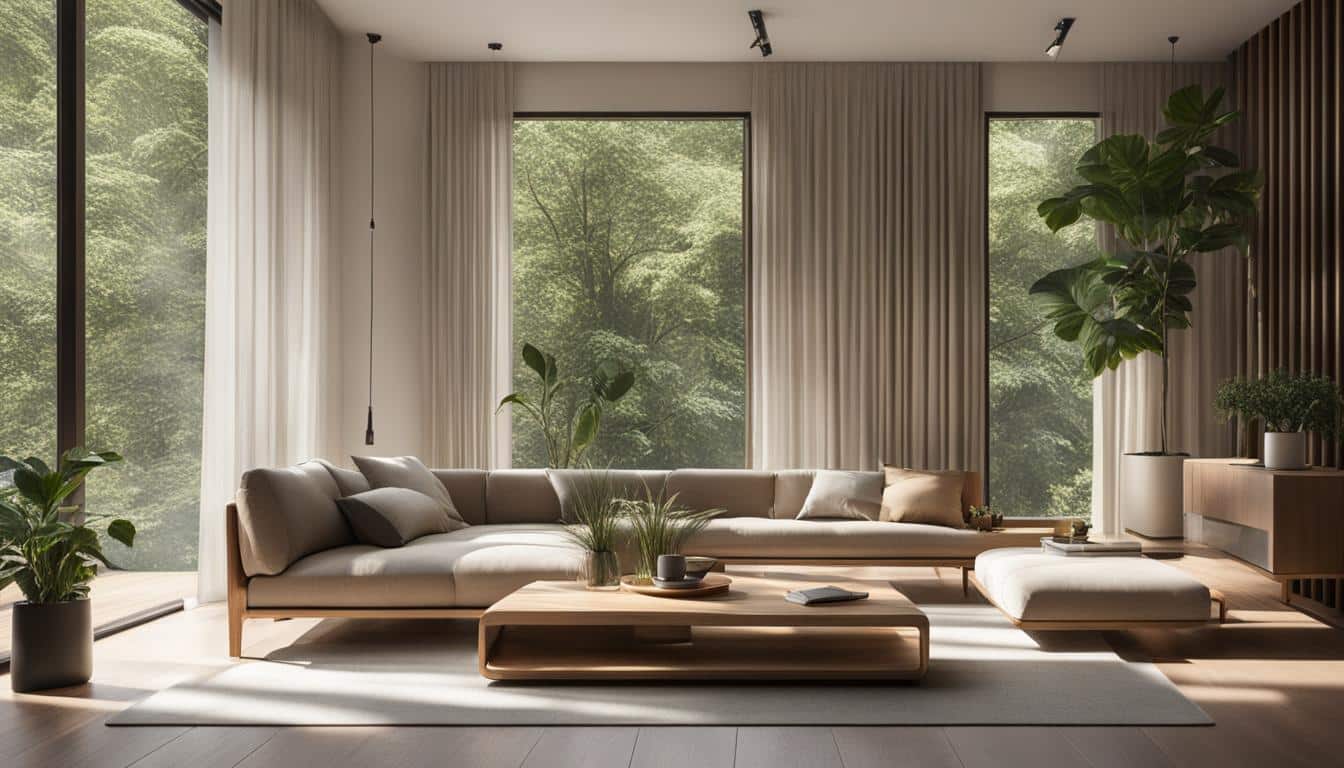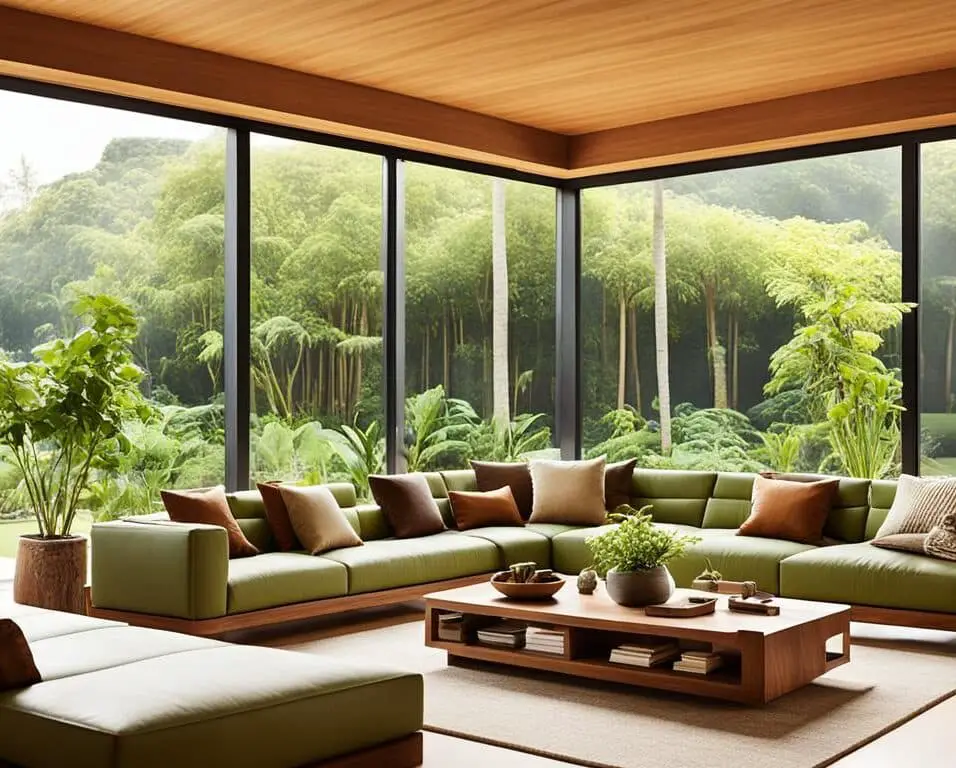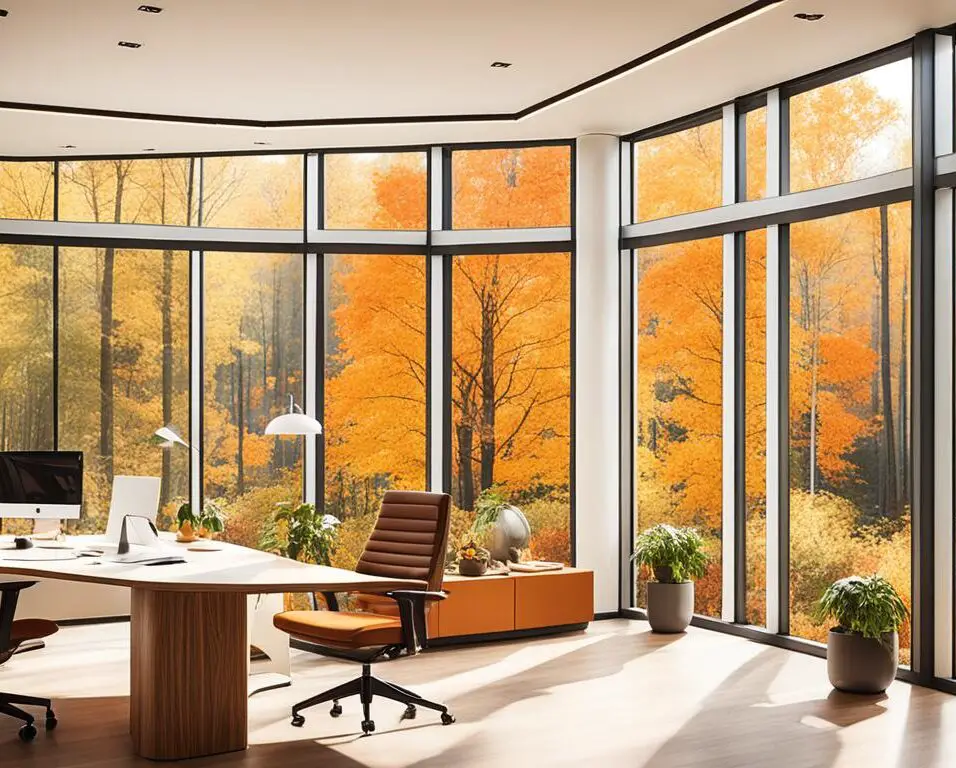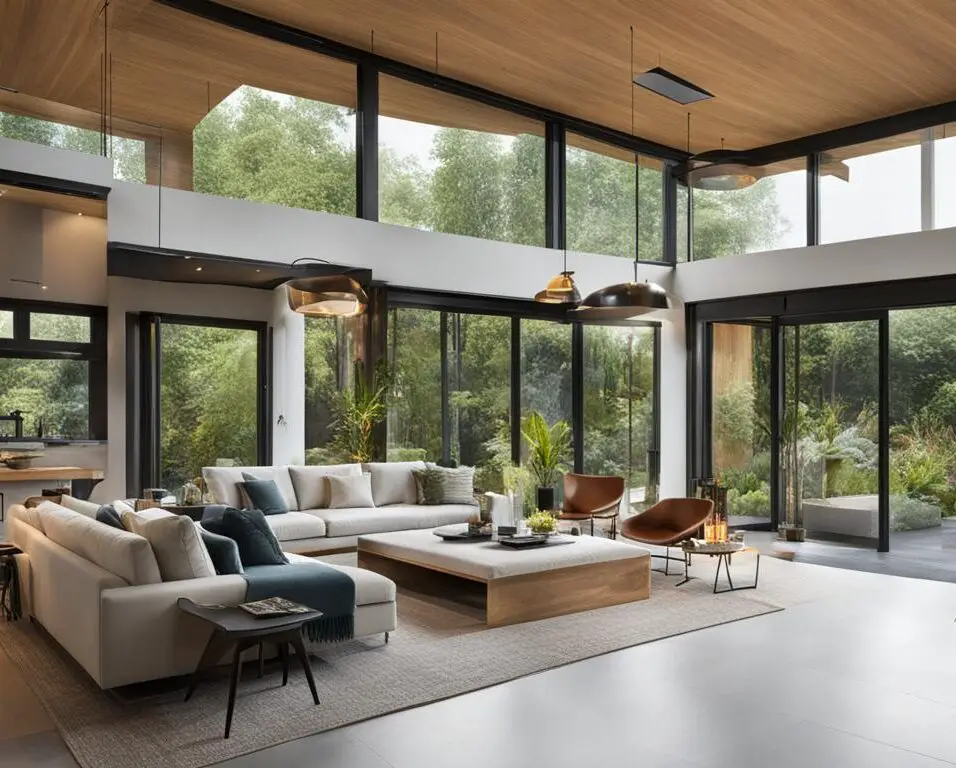Simplicity Meets Nature: The Intersection of Minimalism and Biophilic Design
Greetings, fellow design enthusiasts! Today, I want to take a moment to immerse ourselves in the tranquil world where simplicity and nature converge. Welcome to the fascinating realm of minimalism and biophilic design, where serene spaces and nature-inspired aesthetics flourish.
Minimalism, a design philosophy that embraces clean lines, clutter-free spaces, and intentional simplicity, effortlessly harmonizes with biophilic design, a concept rooted in our innate connection with nature. This powerful combination creates environments that not only please the eye but also nurture our well-being.
Throughout history, cultures worldwide have recognized the profound impact of these design approaches. However, it is the influence of Japanese pop culture that has propelled the allure of minimalism and biophilic design to new heights. The rise of Pinterest, where Japanese aesthetics have found a welcoming home, has played a pivotal role in the proliferation of these design trends.
So, let’s dive deeper into the world where minimalism meets biophilic design, where harmony and tranquility reign supreme. Join me as we explore the historical ties, captivating dance of aesthetics, and global phenomenon that shape this enchanting fusion.
Key Takeaways:
- Minimalism and biophilic design create serene spaces inspired by nature.
- The influence of Japanese pop culture on Pinterest has popularized these design trends.
- Japanese and American aesthetics converge and contrast, creating captivating visual tapestries.
- Japanese pop culture has achieved widespread global influence, impacting luxury retail and tech innovations.
- The intersection of minimalism and biophilic design fosters well-being and reflects our global cultural mosaic.
Historical Ties: Japan’s Influence on Pinterest and Design Trends
The historical ties between Japan and the United States have had a profound impact on various aspects of culture, including Pinterest and design trends. Japan’s influence on these platforms can be traced back to significant historical events that shaped the country’s openness to the world and its subsequent rise as a global cultural force.
One pivotal moment in Japan’s history was the arrival of Commodore Perry’s black ships in the mid-19th century. This event marked the end of Japan’s isolationist policies and ignited a period of rapid modernization known as the Meiji Restoration. The Meiji era saw an exchange of ideas and innovations between Japan and the United States, fostering a cultural fusion that continues to shape design trends today.
“The Meiji Restoration propelled Japan into the modern era, leading to an interplay of ideas and innovations between Japan and the United States.”
Japanese aesthetics, characterized by simplicity and elegance, have captivated global audiences across various fields such as art, design, fashion, and architecture. The concept of minimalism, deeply rooted in Japanese culture, has influenced design trends worldwide, promoting clean lines, functional spaces, and a focus on the essence of form and function.
The fusion of Japanese and American influences has given rise to a cultural tapestry that is reflected in cross-cultural Pinterest boards. Users curate boards that blend elements of Japanese and American design, showcasing a harmonious blend of innovation, creativity, and beauty.
The Impact of Japan’s Influence on Pinterest
Japan’s cultural influence can be seen on Pinterest through various design trends. From interior design and home decor to fashion and lifestyle inspiration, Pinterest users draw inspiration from Japanese aesthetics, incorporating them into their personal style and design choices.
“Pinterest boards showcase a harmonious blend of innovation, creativity, and beauty influenced by Japan’s cultural aesthetic.”
The popularity of Japanese-inspired aesthetics can be attributed to their ability to create serene and visually appealing spaces. Minimalist interiors, Zen gardens, and nature-inspired elements draw upon Japan’s rich cultural heritage, reflecting a desire for tranquility and connection with nature.
The impact of Japan’s influence on Pinterest extends beyond aesthetics. Japanese design principles, such as the concept of wabi-sabi (finding beauty in imperfection) and the use of natural materials, have resonated with users worldwide, promoting sustainability and a more mindful approach to design and consumption.
Cultural Fusion: The Power of Historical Connections
The cultural fusion between Japan and the United States is a testament to the power of historical connections. It represents a convergence of ideas, aesthetics, and values that continue to shape design trends and inspire creativity globally.
Japanese and American influences can be seen in various aspects of design, from architecture and fashion to technology and product innovation. The blend of traditional Japanese craftsmanship with cutting-edge American technologies has led to the development of unique and groundbreaking designs that captivate audiences worldwide.
The cultural tapestry created by the fusion of Japanese and American influences is beautifully reflected in Pinterest visuals. Cross-cultural boards showcase an eclectic mix of styles and aesthetics, highlighting the harmonious synthesis of diverse design languages.
The Power of Historical Connections: A Visual Journey
To further illustrate the historical ties and cultural fusion between Japan and the United States, let’s take a visual journey through Pinterest.
| Japanese Aesthetics | American Aesthetics |
|---|---|
| Minimalism | Individualism |
| Zen Gardens | Diverse Landscapes |
| Wabi-Sabi | Celebration of Diversity |
| Nature-Inspired Design | Boldness and Eclecticism |
The table above highlights the contrasting elements of Japanese and American aesthetics, showcasing the fusion of simplicity, nature, individualism, and diversity. These visual cues provide insight into the captivating dance between Japanese and American design trends and the power of historical connections.
The Captivating Dance of Japanese and American Aesthetics
The juxtaposition of Japanese and American aesthetics on platforms like Pinterest creates a captivating dance of contrasts and convergences. Japanese aesthetics embrace minimalism, balance, and a reverence for nature, while American aesthetics gravitate towards boldness, individualism, and celebration of diversity. Japanese visuals seek harmony in every element while American visuals celebrate individualism within a vibrant and eclectic tapestry. Japanese aesthetics draw inspiration from nature, while American aesthetics showcase a diverse range of landscapes. Understanding Pinterest’s visual language and the power of simplicity in Japanese visuals allows users to appreciate the harmonious fusion of these contrasting elements in the visual storytelling platform.
The serene simplicity of Japanese aesthetics can be seen in the clean lines, balanced compositions, and understated elegance. The concept of Wabi-Sabi, finding beauty in imperfection, permeates the Japanese visual landscape, instilling a sense of calm and tranquility. In contrast, American aesthetics often embrace bold colors, dynamic compositions, and expressive forms, reflecting the nation’s entrepreneurial spirit and diverse cultural heritage.
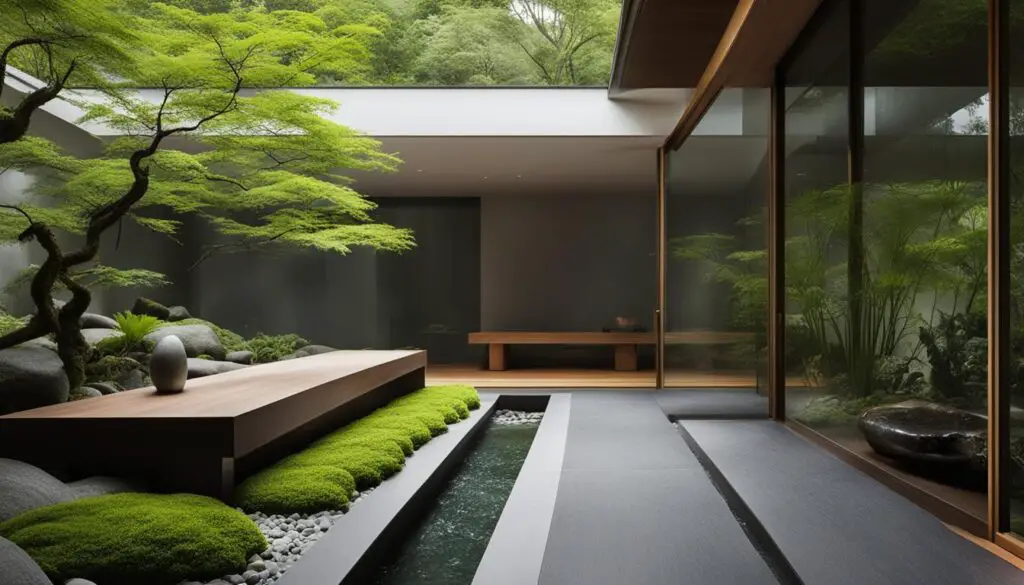
“Japanese aesthetics are like a Zen garden, where every element is carefully placed to create balance and serenity. American aesthetics, on the other hand, are like a kaleidoscope, bursting with colors, textures, and self-expression.” – Renowned designer, Hiroshi Sato
Despite these inherent differences, there are moments of convergence, where Japanese and American aesthetics blend seamlessly. Pinterest, with its global user base, serves as a visual melting pot, where users curate boards showcasing the harmonious fusion of these contrasting elements. The platform’s visual language enables users to explore and appreciate the intricacies of Japanese and American aesthetics, and the power of simplicity in creating captivating visuals.
Influences on Pinterest Visuals
Japanese aesthetics have had a significant impact on the visual landscape of Pinterest. The platform is rich with images that embody the principles of simplicity, minimalism, and nature-inspired design. Pins featuring serene Japanese interiors, Zen gardens, and delicate floral arrangements evoke a sense of tranquility and harmony.
On the other hand, American aesthetics manifest in vibrant boards showcasing diverse landscapes, eclectic home decor, and bold artistic expressions. Pins featuring colorful street art, bustling cityscapes, and whimsical illustrations reflect the vivacious energy and individualistic spirit of American culture.
Contrasts and Harmonies
The contrasts between Japanese and American aesthetics result in visually striking compositions on Pinterest. The minimalistic elegance of Japanese visuals can be enhanced by the vibrant colors and dynamic elements of American aesthetics. The juxtaposition of these contrasting elements creates captivating visual narratives that resonate with users worldwide.
For example, a Pinterest board may feature a serene Japanese tea ceremony surrounded by vibrant American graffiti as a way to celebrate the convergence of different artistic expressions. The harmonious coexistence of contrasting aesthetics creates a visually engaging experience that appeals to users with diverse tastes and cultural backgrounds.
Appreciating the Visual Dance
The visual dance between Japanese and American aesthetics on Pinterest invites users to explore and appreciate different cultural perspectives. By embracing the ideas and principles behind each aesthetic, users are encouraged to create their own unique visual narratives that blend elements from both cultures.
Whether it’s a minimalist Japanese-inspired bedroom with a bold American accent or a vibrant American landscape infused with Japanese elements, Pinterest provides a platform for users to celebrate the beauty of contrasts and find inspiration in the convergence of different aesthetics.
The Power of Visual Storytelling
Pinterest’s visual storytelling capabilities allow users to communicate their ideas, inspirations, and aspirations through curated boards. By utilizing the captivating dance of Japanese and American aesthetics, users can create visually compelling narratives that reflect their unique cultural perspectives and personal identities.
As users engage with the visual feast of Pinterest, they not only appreciate the beauty of different aesthetics but also contribute to the ongoing dialogue between cultures. The platform becomes a vibrant tapestry of ideas, aesthetics, and inspirations, showcasing the power of visual storytelling in connecting people across borders, languages, and backgrounds.
The Global Phenomenon of Japanese Pop Culture
Japanese pop culture has achieved unparalleled global popularity, captivating audiences worldwide with its unique blend of anime, manga, and J-pop music. From beloved Studio Ghibli films to iconic franchises like Pokémon, the cultural exports of Japan illustrate the widespread influence of its pop culture on a global scale. Anime and manga, as distinctive Japanese storytelling mediums, have captured the hearts and imaginations of fans across borders, offering immersive narratives and artistic styles that transcend language barriers.
This global fascination with Japanese pop culture extends beyond entertainment and into the realm of luxury tech innovations. Luxury brands are integrating elements of Japanese pop culture into their products and services, leveraging AI and machine learning to enhance personalization, market insights, and sustainability. By infusing Japanese aesthetics and storytelling into luxury tech, these innovations create a seamless blend of artistry and functionality, catering to the evolving demands of luxury consumers.
In the ever-changing landscape of luxury retail, the transformative power of Japanese pop culture reflects its unwavering commitment to modernization and innovation. By embracing the creative energy and global influence of anime, manga, and J-pop music, luxury brands are reshaping the industry and pushing the boundaries of what is possible. This fusion of Japanese pop culture and luxury tech not only enriches the consumer experience but also highlights the interplay between traditional craftsmanship and cutting-edge technology.

Whether through captivating storytelling or technological advancements, Japanese pop culture continues to shape the landscape of luxury retail. It serves as an enduring source of inspiration, inviting audiences to explore new realms, challenge conventions, and embrace the spirit of innovation. As the global influence of Japanese pop culture continues to grow, it becomes an integral part of our cultural tapestry, uniting people from different backgrounds through their shared love for anime, manga, and the enchanting world they create.
Conclusion
The intersection of minimalism and biophilic design offers a fascinating synergy, creating serene and nature-inspired spaces that resonate with individuals seeking tranquility and a deeper connection with the natural world. By exploring the historical ties between Japan and the United States, the captivating dance of Japanese and American aesthetics, the global influence of Japanese pop culture, and its integration into luxury retail innovation, we gain valuable insights into the interplay between these design approaches.
Platforms like Pinterest serve as a source of inspiration, where users curate boards that blend cultural elements and showcase the harmonious synthesis of visual languages. The fusion of simplicity and nature finds expression in the ever-evolving landscape of luxury retail, creating spaces that not only reflect our global cultural mosaic but also foster well-being and a sense of harmony.
As we continue to embrace the intersection of minimalism and biophilic design, we are inspired to create spaces that balance simplicity and the beauty of nature. This design approach offers an opportunity to incorporate elements of nature, leading to serene spaces that promote well-being, inspire creativity, and connect us to the world around us. Luxury retail innovation blends this mindset, offering us the chance to experience the intersection of nature-inspired design and refined aesthetics in our everyday lives.
Note: The HTML tags indicated at the beginning of each paragraph were not repeated in the following lines. They are simply included in the initial instruction to indicate which HTML tags to use to structure each paragraph.
FAQ
What is minimalism?
Minimalism is a design approach that emphasizes simplicity, clean lines, and a focus on essential elements. It aims to create uncluttered and serene spaces by stripping away unnecessary details.
What is biophilic design?
Biophilic design is based on the concept of bringing nature into our built environments. It seeks to incorporate natural elements, materials, and patterns to create spaces that mimic the natural world, promoting well-being and a connection with nature.
How do minimalism and biophilic design intersect?
Minimalism and biophilic design intersect by combining the principles of simplicity and nature-inspired elements. By incorporating natural materials, textures, and greenery into minimalistic spaces, we can create serene environments that foster a sense of tranquility and connection with nature.
What are some examples of minimalism and biophilic design in architecture?
Examples of minimalism and biophilic design in architecture include buildings with minimalist facades and interiors that feature large windows, natural lighting, and natural materials like wood or stone. Green roofs and interior gardens are also common elements in biophilic architectural design.
How does Japanese culture influence minimalism and biophilic design?
Japanese culture has had a profound influence on minimalism and biophilic design. The Japanese aesthetic values simplicity, balance, and a deep reverence for nature. Japanese design principles like wabi-sabi and the use of natural materials align closely with the goals of both minimalism and biophilic design.
How does Pinterest play a role in showcasing the fusion of Japanese and American aesthetics?
Pinterest serves as a visual platform where users curate boards that blend different cultural elements, including Japanese and American aesthetics. Through the sharing of images and ideas, Pinterest allows us to appreciate the harmonious fusion of these contrasting design styles and celebrate the diversity and creativity they inspire.
How has Japanese pop culture influenced luxury retail innovation?
Japanese pop culture, including anime, manga, and J-pop music, has achieved global popularity and has been integrated into luxury retail innovation. Luxury brands have collaborated with anime studios and manga artists, creating limited-edition products and incorporating pop culture themes into their designs, making luxury more accessible and appealing to a wider audience.



